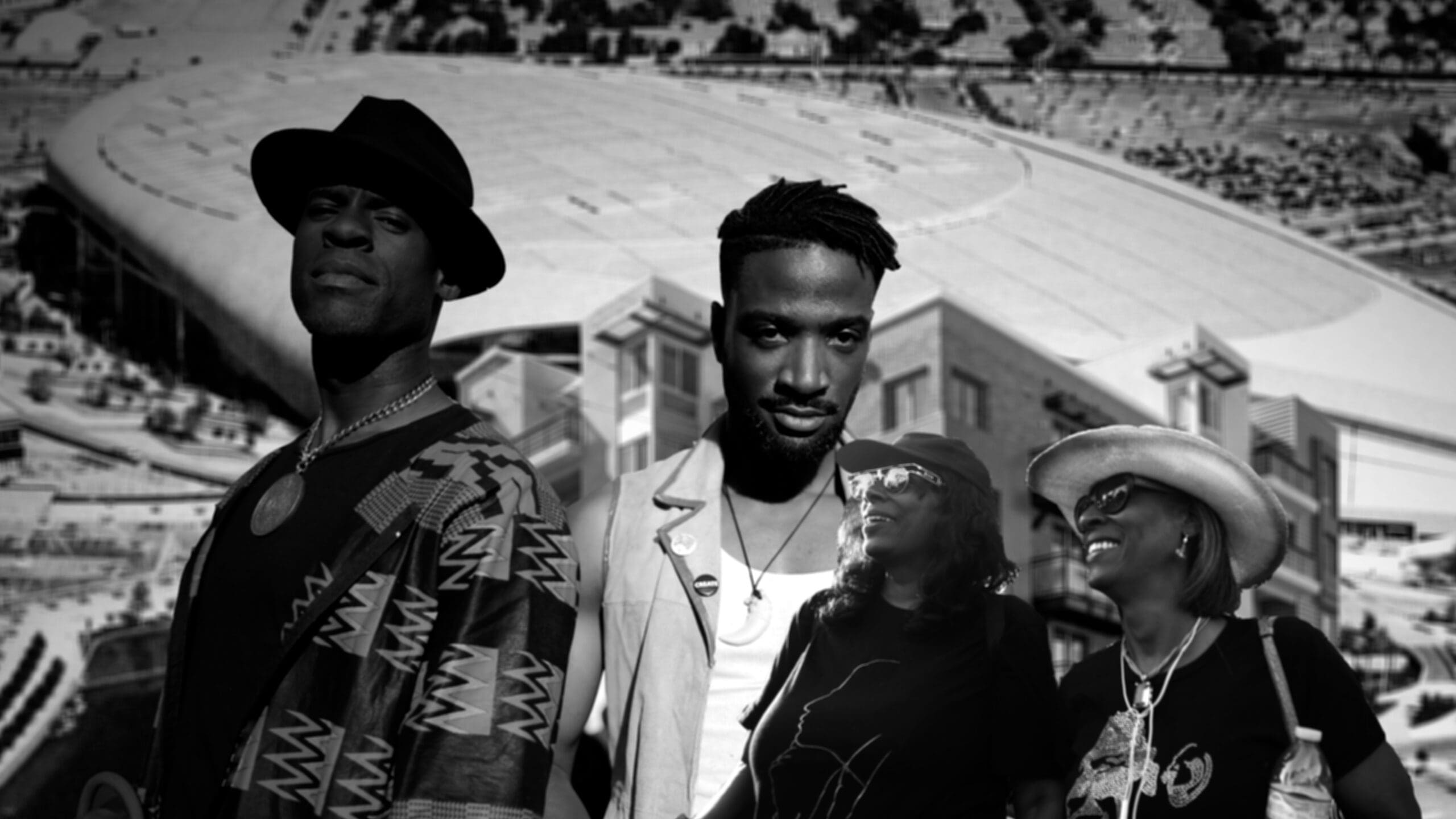Excavating The Future
Excavating the Future: Author Erin Aubry Kaplan on Gentrification in Black Los Angeles
The acclaimed op-ed contributing writer to the N.Y. Times and L.A. Times examines the past, present and future of racialized housing policy.

“Excavating the Future” is a series produced by Capital & Main in partnership with KCET that explores what life could and should be like after the pandemic through conversations with leading writers, artists and activists.
This episode features one of L.A.’s most distinctive journalistic voices, Erin Aubry Kaplan. As the Los Angeles Times’ first Black opinion page columnist Aubry Kaplan was heir to a family tradition: for decades, her father, Larry Aubry, was a prolific voice in the Los Angeles Sentinel, the city’s most important Black newspaper. Aubry Kaplan reveals the city to itself with narratives that weave together the personal and the political. She is currently a contributing opinion writer for the New York Times and is the chair of Capital & Main’s board of directors.
We spoke with Aubry Kaplan about the urban issue of the last generation: gentrification. She lives in Inglewood, where the recently built SoFi Stadium set off a wave of speculation, with the predictable results of displacement and fears that the area will lose its essential Blackness. Aubry Kaplan provides a wider context, explaining how gentrification triggers an older sense of absence for African Americans as recent displacements underscore historical loss. But she can also imagine a future of fullness. Watch and listen to Aubry Kaplan’s replies in the videos below.
Rubén Martínez: You’ve been pondering and writing about gentrification for a good while. Where do things stand right now in Los Angeles and how does the current moment reflect the city’s history of tension over race and class?
Rubén Martínez: Black L.A. was facing an existential question — could its core spaces, like Crenshaw and Leimert Park, survive gentrification? — and then the pandemic hit. How do you think the community is faring as it faces these twin challenges?
Rubén Martínez: Is it possible for Black L.A. to not just survive but thrive? How does a Black vision of an ideal L.A. align with the city’s optimistic mythology (banged up as it is at the moment)?
Conclusion
Aubry Kaplan calls into question the very term “gentrification,” given that it’s an extension of a history of racialized housing policy — just without explicit covenants or redlining. And, as Aubry Kaplan puts it, the “pause” of the pandemic gave us the time to reflect on what progress has delivered and what it hasn’t.
Everywhere gentrification has occurred, it has deepened divides of race and class. The glass and steel towers of downtown Los Angeles preside over an exploding population of unhoused citizens. Can the pause become a re-set? Why go back to “normal” when gentrification has normalized inequality? The pause also reveals what’s been lost — and what’s still here. Crenshaw and Boyle Heights, to name just two of the region’s many Black and Latinx-defined neighborhoods, haven’t been completely erased, even if change has arrived. What made these places vibrant is still there: the freshness of urban youth cultures alongside the traditions of the elders, communal ways of thriving, community gardens and independent storefronts, people working and shopping local.
Maybe, Aubry Kaplan tells us, the pause, as painful as it has been, can buy us enough time to not just imagine but begin bringing a new normal into being.
“Excavating the Future” is hosted and written by Rubén Martínez and produced and directed by Marco Amador for Capital & Main, an award-winning news publication that reports on inequality, climate change and other issues.
Copyright 2022 Capital & Main

-

 Latest NewsDecember 8, 2025
Latest NewsDecember 8, 2025This L.A. Museum Is Standing Up to Trump’s Whitewashing, Vowing to ‘Scrub Nothing’
-

 Latest NewsDecember 10, 2025
Latest NewsDecember 10, 2025Capital & Main, L.A. Times Win Sidney Award for Reporting on Child Farmworkers
-

 StrandedDecember 9, 2025
StrandedDecember 9, 2025Giving Up on the Dream: Asylum Seekers Try Other Options in Mexico
-

 Locked OutDecember 16, 2025
Locked OutDecember 16, 2025This Big L.A. Landlord Turned Away People Seeking Section 8 Housing
-

 Column - California UncoveredDecember 12, 2025
Column - California UncoveredDecember 12, 2025They Power the U.S. Economy, But Will Struggle to Afford Health Care
-

 Column - State of InequalityDecember 11, 2025
Column - State of InequalityDecember 11, 2025A Little Place Called Home?
-

 The SlickDecember 19, 2025
The SlickDecember 19, 2025‘The Poor Are in a Very Bad State’: Climate Change Accelerates California’s Cost-of-Living Crisis
-

 Locked OutDecember 23, 2025
Locked OutDecember 23, 2025Section 8 Housing Assistance in Jeopardy From Proposed Cuts and Restrictions
